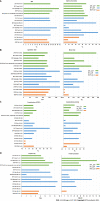Spleen-preserving distal pancreatectomy from multi-port to reduced-port surgery approach
- PMID: 37555124
- PMCID: PMC10405122
- DOI: 10.4240/wjgs.v15.i7.1501
Spleen-preserving distal pancreatectomy from multi-port to reduced-port surgery approach
Abstract
Background: Minimally invasive pancreatic surgery via the multi-port approach has become a primary surgical method for distal pancreatectomy (DP) due to its advantages of lower wound pain and superior cosmetic results. Some studies have applied reduced-port techniques for DP in an attempt to enhance cosmetic outcomes due to the minimally invasive effects. Numerous recent review studies have compared multi-port laparoscopic DP (LDP) and multi-port robotic DP (RDP); most of these studies concluded multi-port RDP is more beneficial than multi-port LDP for spleen preservation. However, there have been no comprehensive reviews of the value of reduced-port LDP and reduced-port RDP.
Aim: To search for and review the studies on spleen preservation and the clinical outcomes of minimally invasive DP that compared reduced-port DP surgery with multi-port DP surgery.
Methods: The PubMed medical database was searched for articles published between 2013 and 2022. The search terms were implemented using the following Boolean search algorithm: ("distal pancreatectomy" OR "left pancreatectomy" OR "peripheral pancreatic resection") AND ("reduced-port" OR "single-site" OR "single-port" OR "dual-incision" OR "single-incision") AND ("spleen-preserving" OR "spleen preservation" OR "splenic preservation"). A literature review was conducted to identify studies that compared the perioperative outcomes of reduced-port LDP and reduced-port RDP.
Results: Fifteen articles published in the period from 2013 to 2022 were retrieved using three groups of search terms. Two studies were added after manually searching the related papers. Finally, 10 papers were selected after removing case reports (n = 3), non-English language papers (n = 1), technique papers (n = 1), reviews (n = 1), and animal studies (n = 1). The common items were defined as items reported in more than five papers, and data on these common items were extracted from all papers. The ten studies included a total of 337 patients (females/males: 231/106) who underwent DP. In total, 166 patients (females/males, 106/60) received multi-port LDP, 126 (females/males, 90/36) received reduced-port LDP, and 45 (females/males, 35/10) received reduced-port RDP.
Conclusion: Reduced-port RDP leads to a lower intraoperative blood loss, a lower postoperative pancreatic fistula rate, and shorter hospital stay and follow-up duration, but has a lower spleen preservation rate.
Keywords: Laparoscopic distal pancreatectomy; Minimally invasive surgery; Multi-port; Reduced-port; Robotic distal pancreatectomy; Spleen preservation.
©The Author(s) 2023. Published by Baishideng Publishing Group Inc. All rights reserved.
Conflict of interest statement
Conflict-of-interest statement: The authors have no conflicts of interest to declare.
Figures


References
-
- Adam MA, Choudhury K, Goffredo P, Reed SD, Blazer D 3rd, Roman SA, Sosa JA. Minimally Invasive Distal Pancreatectomy for Cancer: Short-Term Oncologic Outcomes in 1,733 Patients. World J Surg. 2015;39:2564–2572. - PubMed
-
- Shoup M, Brennan MF, McWhite K, Leung DH, Klimstra D, Conlon KC. The value of splenic preservation with distal pancreatectomy. Arch Surg. 2002;137:164–168. - PubMed
-
- Yoon YS, Lee KH, Han HS, Cho JY, Ahn KS. Patency of splenic vessels after laparoscopic spleen and splenic vessel-preserving distal pancreatectomy. Br J Surg. 2009;96:633–640. - PubMed
LinkOut - more resources
Full Text Sources
Research Materials

